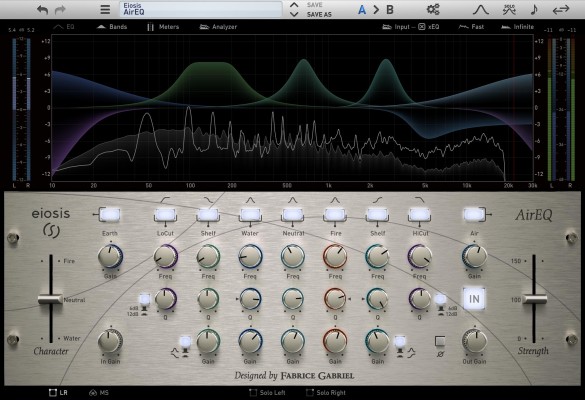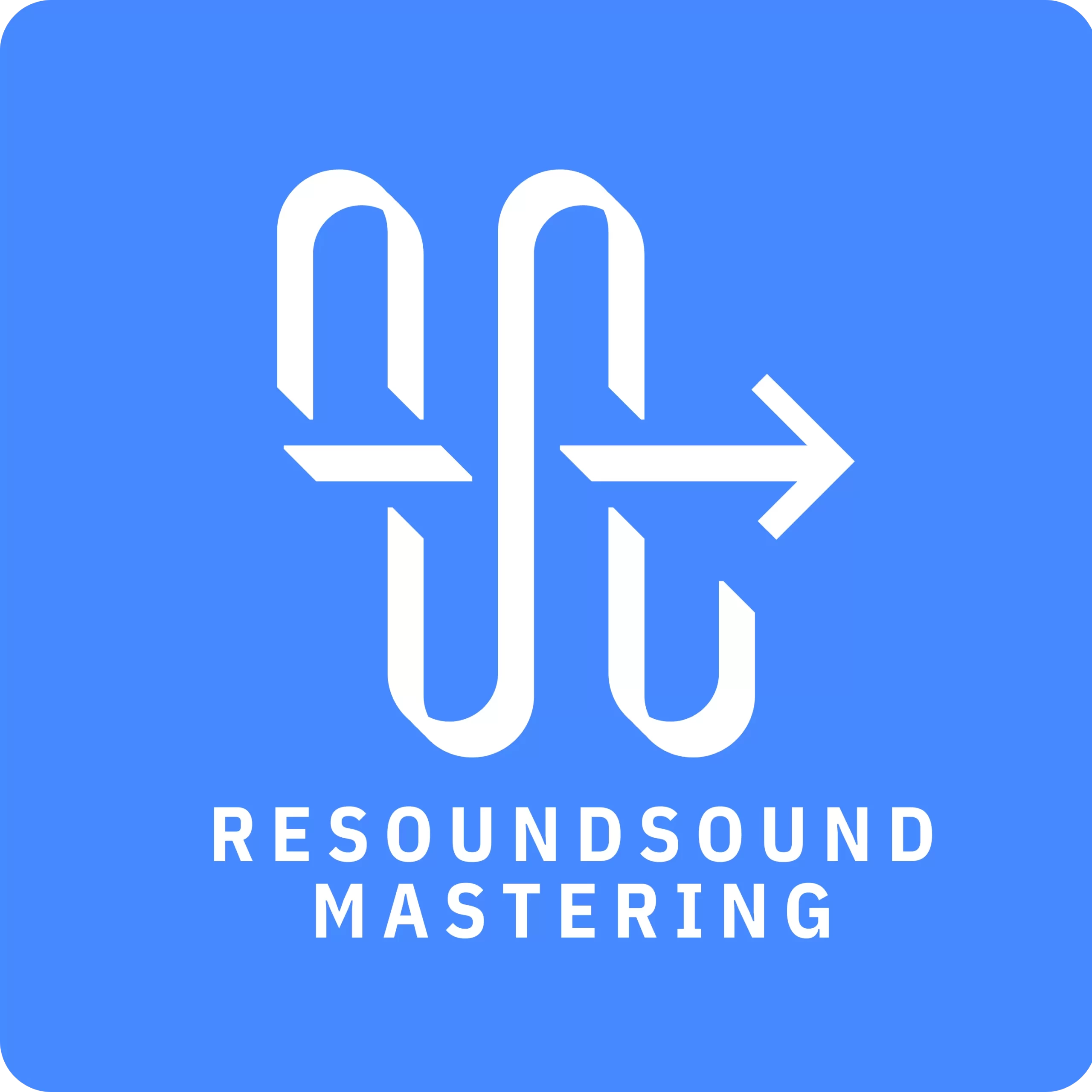A while back I received a copy of Eiosis AirEQ Premium to try out (thanks Eiosis). I’ve been using it now for a good couple of months – here are my thoughts.
AirEQ is a plugin designed by Fabrice Gabriel. Together with Steven Slate he is also responsible of many of the great Slate Digital plugins. So needless to say I had pretty high expectations of this EQ.
The Concept
Eiosis say AirEQ “was designed with a vision of achieving musical, technical and sonic excellence”. They wanted to make something that sounds great and is simple, intuitive and easy to use.
As you might know I’m always interested in anything that can make things more intuitive and practical. There are too many plugins out there that do great things but aren’t really great to use. I was delighted to hear that usability has been a goal in the design process of AirEQ.

Features
AirEQ has 9 filters: 5 bells (2 switchable to shelves), low and high cuts and low and high shelf bands that are branded “Earth” and “Air”. It does everything you expect a good EQ to do – including M-S operation.
Besides the usual controls you would find on almost any other EQ, the AirEQ has a few extra features up it’s sleeve.
The one that probably differentiates AirEQ from other plugins the most is the character control.
The character control changes the shape of the filters. You can set it to control each filter individually or all filters globally. There are two shapes named Fire and Water and the character slider fluidly morphs between them.
Dialing in fire gives you that classic, tight resonant type bell filter sound. Water character then is much broader with distinctive flat curve tops/bottoms and sounds more transparent.
Besides character, you have a strength setting which controls the intensity of the processing. It’s a very handy thing to have for fine tuning.
The earth and air shelving bands are specifically designed to boost/cut lows and highs in a pleasing and unobtrusive way, without making things sound boomy or harsh. They are working very well for me in most situations.
AirEQ also features a very nice looking and precise spectrum analyzer display and I/O metering.
Workflow
The way I like to use AirEQ is to dial in a setting and then experiment with the character and strength controls to find the sweet spot.
I really like the way the character and strength sliders give you an extra layer of control to fine tune the sound.
It’s a refreshing way to work and I do find it makes it easier to achieve the sound you’re looking for.
A fun little detail is that you an actually give names to each EQ band. I don’t find myself really doing that but I still think it’s a nice idea and works great coupled with the very well thought out presets.
Presets in EQ’s are often a bit useless, but AirEQ approaches this from a different angle. Each band has been given a relevant name, the frequency and Q is set but the gain is level at zero. This gives you a good idea of what different approaches and starting points there can be for different situations. I very much like the way presets are executed in AirEQ.
There is more functionality under the hood. One of my favorite features is the Frequency Finder: Shift-clicking any frequency band automatically boosts the gain of the band with a tight Q, for as long as the modifier key is depressed.
All in all the workflow in AirEQ Premium is very nice. The plugin looks nice and simple. All the relevant controls are clearly laid out, and there’s more hidden under the hood.
Lastly it should be mentioned that Eiosis is working on a dedicated, motorized hardware controller for AirEQ Premium. Very interesting.
Sound
How does it sound? Natural, smooth and “easy” in my opinion. With easy I mean it doesn’t take time to get used to the way it sounds and behaves.
With AirEQ small adjustments go a long way for usual balancing tasks. When you crank it though, it still sounds good.
The Earth and Air bands have been quite useful to me. I do wish there was a way to adjust their frequency range a little bit though. Especially in the low end I tend to get into situations sometimes where I would like to nudge the Earth band 10-30 Hz higher. That can be compensated with the low shelf and bell filters though, so it’s just a minor annoyment.
I like how AirEQ sounds a lot. I’ve ended up using it in every project I’ve worked on since I got it. That should tell you something.
How does it compare to FabFilter Pro-Q 2?
A while back I wrote about another new and highly anticipated EQ plugin – the FabFilter Pro-Q 2. How does the AirEQ compare to that?
Let me first say I think we are completely spoiled with great EQ plugins these days. Completely!
Now, these two plugins are both versatile but they do have slightly different orientations in my opinion. Even though AirEQ is perfectly capable of doing surgical work, I see it more as a balancing/shaping type of tool. It’s fun to play around with the character control and hone in on what sounds best.
Pro-Q 2 then shines when you need to do anything really precise, like cleaning up unwanted resonances or imposing some character from another source. The Pro-Q 2 is brimming with special features like spectrum grab, EQ match and highly flexible filter shapes. AirEQ clearly stands for simplicity and doesn’t even want to go there.
I find myself using both plugins – AirEQ for balancing/shaping work and Pro-Q 2 as a precision tool. But if I only owned one of them I could definitely get things done with either plugin.
Wishlist
The AirEQ is a great plugin, but here are a couple of things I would love to see happen in the future updates:
- Automatic output gain compensation.
This is a feature that has started popping up in some other EQ plugins recently and I’ve become a big fan of it. I think it’s hugely helpful, especially in mastering situations. I think it would suit a plugin like AirEQ perfectly.
- Frequency adjustment for Earth and Air bands.
This isn’t a biggie, but having to compensate the lack of this using other filters is a bit frustrating.
- Drop the iLok requirement.
I do respect the developers’ choice to use any copy protection they want. But to me iLok simply is a pain.
I work on a laptop.
1. iLok takes up one valuable USB port.
2. You always have to remember to take it with you wherever you go.
3. You always have to watch for it and be careful not to break it when you are handling the computer.
I continue to use iLok because many of my favorite plugins still require it. It is not the plugin devs fault, but it’s really unfortunate that the only copy protection system that seems to work for some companies has to be such a pain in the ass.
Conclusion
AirEQ is very elegant – it really is one of the most beautiful looking plugins I’ve come across. Of course it’s what’s under the hood that really counts though. And AirEQ does not disappoint in that department.
I’ve enjoyed using Eiosis AirEQ a lot and in the past couple of months it has become the EQ I use the most. Even though I already own many great EQ plugins that I like.
If you already own another good and versatile EQ plugin, then the AirEQ may not offer enough new value to justify spending a good amount of money on it (especially if you need to buy iLok as well).
However, there is no denying the fact that AirEQ is one of the best EQ’s out there and also brings something new to the table.
Why not see for yourself – you can download the demo from Eiosis website.

Leave a Reply